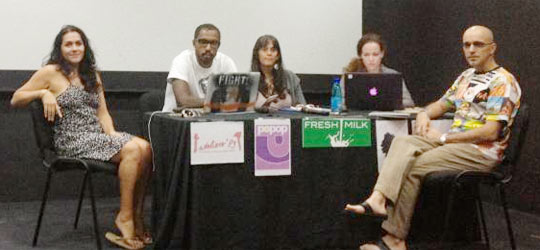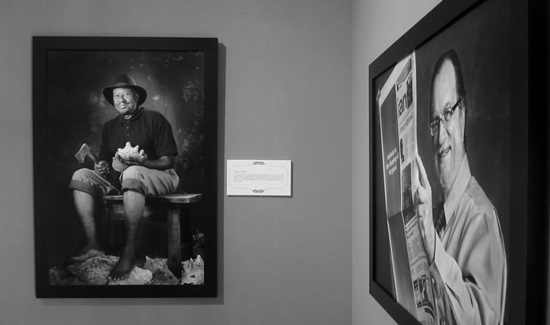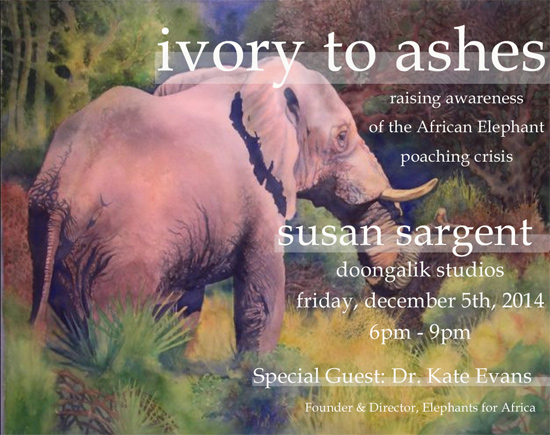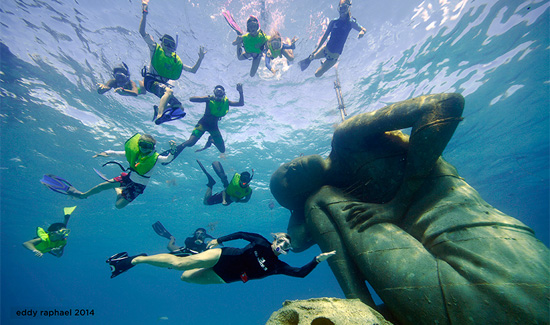 Can Caribbean countries collaborate to move art forward in the region?
Can Caribbean countries collaborate to move art forward in the region?
It’s a question that Caribbean curators, writers and artists came together to begin to answer at the recent Aruba Linked/Caribbean Linked arts symposium.
It’s also a question that Bahamian artist and NAGB chief curator John Cox hopes that the answer to is yes.
“There’s a collective consciousness that sees there is a need (for the region) to come together and promote its art to the world,” Cox told Arts&Culture after returning from the symposium.
“I am sure there are also some Bahamian artists, and artists from other countries in the region, who don’t see a need for it but there is also a core group of people throughout the Caribbean who see where the ovals overlap and that we can do something.”
Indeed, the four-day (Oct. 12-15) symposium was itself the product of a collaboration. Caribbean art networks Ateliers ‘89 of Aruba and Fresh Milk Art Platform of Barbados organized the event that covered a wide range of topics related to the potential for Caribbean collaboration in the visual arts and how it can benefit the region as a whole.
Cox, also the founder/director of Popopstudios International Center for the Visual Arts and a part-time lecturer at The College of The Bahamas, was among the panel of symposium presenters.
Representing the NAGB, Cox spoke on the Bahamian visual arts condition and how the National Art Gallery of the Bahamas (NAGB), Popopstudios and the Art Department of The College of The Bahamas have helped shape that. He also spoke on how those institutions have helped develop the critical mass in The Bahamas.
Other presenters included Rocio Aranda Alvardo, curator at El Museo del Barrio of New York City; Paco Barragan, independent curator, Madrid, Spain; Holly Bynoe, visual artist and co-founder of ARC Magazine of St. Vincent and the Grenadines, and Annalee Davis, visual artist and founder/director of the Fresh Milk Art Platform. Elvis Lopez of Ateliers ‘89 moderated the discussions.
Discussions focused on existing links between countries in the region and the possibility of creating new linkages, challenges, the importance of mentoring young creatives, the development of new Caribbean products, the expansion of the critical arena, the role of the web and the need to expose art production beyond “Caribbean” themed exhibitions.
It also looked at the benefits of having a greater internal sense of what’s going on in the visual arts in the individual Caribbean countries, Cox explained.
“One country can’t do it alone,” he said. “But if we join together, we can move art forward in the region. It is very, very important. The critical mass is growing, how we communicate is changing and younger artists want to be a part of a bigger art community.”
That point should not be lost on The Bahamas, which is oftentimes regarded as the stuck-up cousin of other Caribbean island nations. It is a strained relationship, but one that seems to be slowly changing for the better, at least amongst Caribbean artists.
By the Caribbean coming together to promote its diverse and talented pool of artists the region will have a better chance of making more of a mark on the international arts scene, and hopefully begin to lose the Caribbean label and simply be seen as ‘artist’.
For its part, The Bahamas has its work cut out for it. It is often poorly represented in international exhibitions of Caribbean work. Take for example the Caribbean Crossroads exhibition now on in New York City. Of the 600 works of art featured from the Caribbean, The Bahamas has less than five artists represented. Aruba had 40.
The opportunity to visit and experience other art communities in the Caribbean brings a valuable perspective, said Cox.
“It allows me to compare what’s going on in our community. I learned what we can learn from each other. I learned that The Bahamas has more administrative cohesion from institution to institution, and this is something that we can bring to the table,” he said.
Cox is referring to events like Transforming Spaces, when individual galleries work together to put on one of the premier art events in the country.
One of the goals coming out of the conference is to create exchanges within a network of participating Caribbean countries that have the resources, allowing artists to experience the various art spaces, he noted.
Cox said existing programs, such as the Popop Junior Residency Prize could also be expanded to allow prize winners to experience different art networks in the Caribbean.
The discussion did not end on the last day of the symposium. Aruba Linked panelists have been invited to Transforming Spaces 2013, and Cox hopes that he and independent curator Paco Barragan can co-curate a project at the NAGB.
“But we can talk about this stuff until we drop dead,” said Cox. “We need to do something and we don’t have to wait for the government’s support to do it.”
Erica Wells
The Nassau Guardian
Published: Tuesday, November 6, 2012
Caption: From left: Rocio Aranda Alvardo, curator at El Museo del Barrio of New York City; John Cox, chief curator, NAGB; Annalee Davis, visual artist and founder/director of the Fresh Milk Art Platform; Holly Bynoe, visual artist and co-founder of ARC Magazine of St. Vincent and the Grenadines, and Paco Barragan, independent curator, Madrid, Spain.



